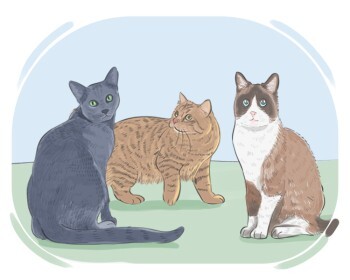Masulong na Bokabularyo para sa TOEFL - Ang Kaharian ng Hayop
Dito matututo ka ng ilang salitang Ingles tungkol sa kaharian ng hayop, tulad ng "feline", "laro", "biktima", atbp. na kailangan para sa pagsusulit na TOEFL.
Repasuhin
Flashcards
Pagbaybay
Pagsusulit

(of animals) capable of surviving both on land and in water

amphibious, kayang mabuhay sa lupa at tubig
a member of the dog family, including domestic dogs, wolves, foxes, and related animals

aso, canino
any animal in the cat family

pusa, pamilya ng pusa
any of the long, stiff hairs that grow on the face of a cat, mouse, etc.

bigote, balbas
each of the curved pointy teeth of some animals such as elephants, boars, etc., especially one that stands out from the closed mouth

pangil, tusok
the long and protruding facial part of an animal which comprises its nose and mouth, especially in a mammal

nguso, ilong
a long, pointed tooth found in carnivorous animals, used for biting, gripping, and tearing flesh

pangil, matulis na ngipin
the animals of a particular geological period or region

hayop, fauna
small animals or insects that are believed to be destructive and are difficult to handle when they appear in a considerable number

peste, mga nakakapinsalang hayop
wild animals or birds that are hunted for food or sport

huli, nahuhuling hayop
(of sheep, cows, etc.) to feed on the grass in a field

magsabsab, kumain ng damo
(of some animals or plants) to spend the winter sleeping deeply

mag-hibernate, magtulog sa taglamig
any animal that lives by hunting and eating other animals

mandaragit, maninila
an animal that is hunted and eaten by another animal

biktima, huli
a bird, such as an eagle or a hawk, that feeds on animal flesh

ibon ng mandaragit, ibon mandaragit
a prominent feature exhibited by some birds on their heads, consisting of feathers, fur, or skin

palong, tuktok
a domesticated bird that is particularly kept for its meat and eggs

manok, ibon
to keep an egg in a favorable condition to help it develop until it hatches

painitin, alagaan
a bird that is too young to leave the nest built by its parents, especially one that has not yet learned how to fly

sisiw, ibon na hindi pa marunong lumipad
the feathers of a bird covering its body

balahibo, mga balahibo
a long, sharp nail on the foot of some birds, especially birds of prey

kuko, pangalmot
a marine invertebrate with a body full of holes through which water can circulate and nutrients can be absorbed

espongha, poriporo
a large number of fish or sea mammals that swim together

pangkalan, kawan
a sea creature with a hard shell and jointed legs such as crabs and lobsters

crustacean, hayop na may matigas na balat at kasukasuan
a class of terrestrial arthropods that breathe air and have four pairs of limbs, such as spiders, scorpions, etc.

arachnid
a parasitic flatworm that is shaped like a ribbon and lives in the intestines of mammals

bulate, tapeworm
a small wingless insect that is silvery and nocturnal, which feeds on paper products or clothing

pilak na isda, silverfish
an invertebrate animal with a segmented body and a chitinous exoskeleton, such as a spider, crab, etc.

arthropod, hayop na arthropod
an arthropod with many pairs of legs and a pair of poisonous fangs

alupihan, skolopendra
the stage of the metamorphosis that comes between the larval and adult stages of a moth or butterfly

krisalida, pupa
a silky covering that the larvae of some insects make around themselves during metamorphosis

kukon, balot na seda
a young form of an insect or an animal that has come out of the egg but has not yet developed into an adult

larva
the hard outer covering that supports the body of an animal, such as an arthropod

exoskeleton, balat
a small parasitic insect that lives and feeds on the body of warm-blooded animals

kuto, parasito
any invertebrate that lives in aquatic or damp habitats and has a soft unsegmented body, often covered with a shell

molusko, kabibe
a parasitic or predatory worm of the annelid family that lives in freshwaters and drinks blood by attaching itself to its prey

linta, hirudin

































